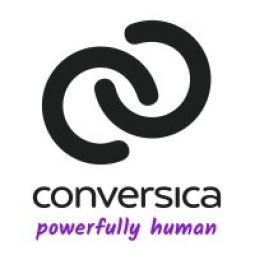Applicable Industries
- Finance & Insurance
- Telecommunications
Applicable Functions
- Procurement
- Sales & Marketing
Use Cases
- Inventory Management
- Usage-Based Insurance
Services
- System Integration
About The Customer
Vern Fonk Insurance is an innovative independent insurance brokerage serving customers in Washington and Oregon with auto, homeowner, commercial bonds, commercial truck, and commercial liability insurance. Over the past 50 years, the company has continued to grow and has built its reputation on personalized sales and service. The company was facing challenges in engaging and nurturing Internet leads, converting aged leads, and retaining past customers who did not renew their policies. The lack of an after-hours sales group was also resulting in missed opportunities to capture and engage interested leads.
The Challenge
Vern Fonk Insurance, an independent insurance brokerage based in Washington, USA, was facing the challenge of engaging and nurturing more Internet leads without the need to hire additional staff. The company had no after-hours sales group, which resulted in missed opportunities to capture and engage interested leads. Furthermore, the agency lacked a scalable process to convert aged leads and past customers who did not renew their policies. The company was also losing customers to competitors with online systems that facilitated overnight or after-hours purchases.
The Solution
Vern Fonk Insurance implemented Conversica, a sales conversion management platform, to assist its insurance brokerage agents 24/7. The platform was integrated with the agency’s existing customer relationship management (CRM) system, enabling agents to work leads more efficiently. Conversica created automated, two-way email-based communication with leads using a human persona, determined the lead’s intent in real-time by interpreting text in the email response, alerted the agent to contact qualified leads who indicate intention to buy now, and followed up after the agent’s initial contact to continue to nurture the lead and get additional information or feedback. Conversica was used to improve contact and conversion rates across four different types of campaigns and lead types: business hours, after-hours, re-engage, and win back.
Operational Impact
Quantitative Benefit

Case Study missing?
Start adding your own!
Register with your work email and create a new case study profile for your business.
Related Case Studies.

Case Study
Real-time In-vehicle Monitoring
The telematic solution provides this vital premium-adjusting information. The solution also helps detect and deter vehicle or trailer theft – as soon as a theft occurs, monitoring personnel can alert the appropriate authorities, providing an exact location.“With more and more insurance companies and major fleet operators interested in monitoring driver behaviour on the grounds of road safety, efficient logistics and costs, the market for this type of device and associated e-business services is growing rapidly within Italy and the rest of Europe,” says Franco.“The insurance companies are especially interested in the pay-per-use and pay-as-you-drive applications while other organisations employ the technology for road user charging.”“One million vehicles in Italy currently carry such devices and forecasts indicate that the European market will increase tenfold by 2014.However, for our technology to work effectively, we needed a highly reliable wireless data network to carry the information between the vehicles and monitoring stations.”

Case Study
Vodafone Hosted On AWS
Vodafone found that traffic for the applications peak during the four-month period when the international cricket season is at its height in Australia. During the 2011/2012 cricket season, 700,000 consumers downloaded the Cricket Live Australia application. Vodafone needed to be able to meet customer demand, but didn’t want to invest in additional resources that would be underutilized during cricket’s off-season.

Case Study
SKT, Construction of Smart Office Environment
SK T-Tower is the headquarters of SK Telecom. Inside the building, different types of mobile devices, such as laptops, smartphones and tablets, are in use, and with the increase in WLAN traffic and the use of quality multimedia data, the volume of wireless data sees an explosive growth. Users want limitless Internet access in various places in addition to designated areas.










